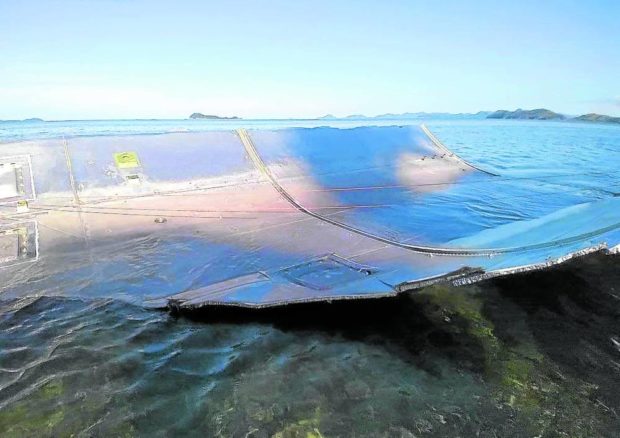More rocket debris seen to fall off Northern Luzon – PhilSA

REMNANT | Wreckage of a rocket believed to be launched by China is found in the waters off Palawan province on Nov. 7, 2022. China had again launched on Monday morning a rocket and the Philippine Space Agency warns that debris will fall to Earth, particularly in the waters off northern Luzon. (Photo by RANIEL MONTILLA / Contributor)
LAOAG CITY, Ilocos Norte, Philippines — Unburned debris from Long March 7A, a Chinese rocket that was launched from the Wenchang Space Launch Center in China’s Hainan Island on Monday morning, was projected to fall into two drop zones in the country, according to the Philippine Space Agency (PhilSA).
In an advisory on Monday, the PhilSA said one of the drop zones was about 80 kilometers from Burgos town, Ilocos Norte province, or 121 km from Dalupiri Island in the Babuyan Islands.
The second possible drop zone could be some 42 km from Sta. Ana town in Cagayan province, or 41.37 km from Camiguin Island in the Babuyan Islands, or 47 km from the Babuyan Islands.
The PhilSA said it had already coordinated with the Civil Aviation Authority of the Philippines about the coordinates of the areas where the expected unburned debris from the rocket was projected to fall.
‘Dangerous’
Although the possibility of rocket debris falling on populated areas was not anticipated, the PhilSA reiterated its earlier advice to the public to notify local authorities immediately if suspected debris is sighted.
Article continues after this advertisement“Falling debris poses danger and potential risk to ships, aircraft, fishing boats, and other vessels that will pass through the drop zone,” the agency said.
Article continues after this advertisementIt also warned of the possibility for the debris to float around the expected drop zones and wash toward nearby coasts.
In September last year, residents of the provinces of Ilocos Norte and Cagayan were also cautioned against retrieving or coming into close contact with any piece of debris from a Chinese rocket launched into space.
The most recent Chinese rocket wreckage to fall within the country’s jurisdiction was in November last year.
Residents of Busuanga Island in Palawan province discovered the detached rocket components in shallow water near the shoreline.
The remnants were from the rocket that was carrying a payload to China’s Tiangong Space Station, which is in low orbit some 340 to 450 km above Earth’s surface.